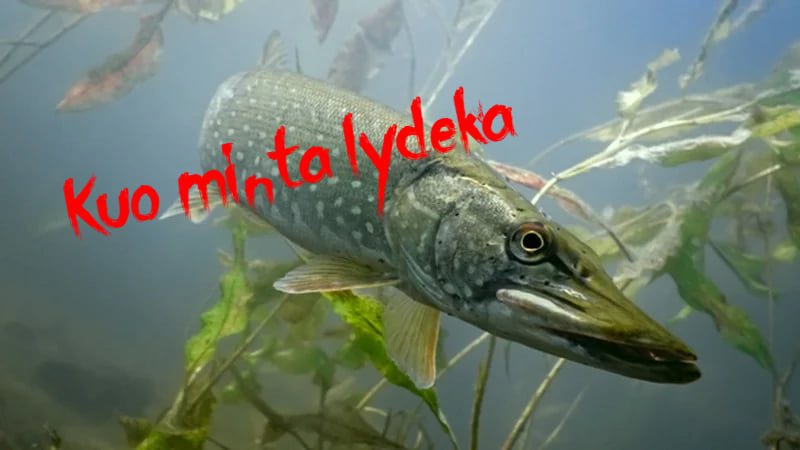Pike fishing with live fish is not as mobile as spinning, but at the same time it requires much more careful preparation and organization of fishing. Pike – is one of the most popular predators of our freshwater bodies. It is almost always hungry, except during the spawning period, so you can fish all year round (except for the spawning period, when fishing is prohibited).
The most common method of fishing in our region is spinning. However, not all anglers can withstand the activity required for spinning fishing. There is an alternative for them - pike fishing with live fish. Catch pike live bait can be used by everyone, regardless of age and health. It does not require much physical effort, but provides no less interesting moments in the fight with the predator. In this article, we will discuss the most popular methods of catching a predator on live bait.
Where to fish in different seasons
Summer
Pike likes to attack prey from vegetation, so the most promising summer fishing spots are windows of clear water between grasses. Since such places are very difficult to reach from the shore, most anglers prefer fishing from a boat.
Autumn
In autumn, the vegetation becomes less abundant, and the predator shows an extraordinary appetite as winter approaches. In autumn, pike fishing with live fish is effective with all tools. As the water begins to cool, pike retreat from grass lines to holes and slopes. Targeted fishing for trophy specimens is carried out during this period, which is especially productive at the onset of the first frosts.
Winter
In winter, pike fishing with live fish changes dramatically, because fishing is already done from the ice. From the ice, the angler can get to the most promising spots and place the lures regardless of bad weather conditions. However, there is one "but": the pike rarely moves away from its usual habitat, so the search for a promising place can take time. In this case, it is rational to fish in a familiar lake.
Spring
In spring, when the ice melts and after spawning, pike feed especially actively, attacking any more or less edible prey. At the moment, the pike is kept mainly in the lower layers of water, but not too deep, usually near the grass line where it spawns. During this period, it is best to fish along the reed line.
Pike fishing with live fish with a floating rod
Pike fishing with live fish using a floating rod is most promising in summer, spring and early autumn. Rods of medium length (6-7 meters) with a test weight of more than 40 grams are mostly used. You can use a non-inertial coil.
The main line can be a high-quality monofilament line with a diameter of 0.3 mm or more, or a floating braided line. The use of a leash is mandatory. Catching trophy pike uses a large live bait to distract the predator from the coarse gear.
The equipment includes a barrel-shaped float with 20-25 grams of test (its weight varies depending on the size of the bait) and powerful hardened steel hooks (often triple). When casting, the live bait should be 25-40 cm from the bottom and be quite active.
The pike attacks the bait suddenly and aggressively, usually taking the float far enough to the side. It is very important to choose the optimal time of undermining, because the predator does not eat the prey immediately. The pike bites him through the body, pulls away, and only then begins to swallow. This means that the best time to undercut is when the float, which has moved sideways, stops for a moment and starts moving again.
IMPORTANT
From 2023 May 1st non-rod-mounted recreational float fishing gear that is fished with a hook will no longer be permitted. This ban will not apply to ice fishing, but in the summer, skates and similar fishing gear, called "popke" among fishermen, will no longer be used in water bodies.
Pike fishing in winter
When fishing in winter, the main problem is to find attractive places, so it is recommended to hunt for pike in familiar waters. Naturally, there are no densities on the ice, so the most promising are pits, edges, all kinds of bottom anomalies, swamps, etc. It is very difficult to identify them under the ice, especially if you are not familiar with the lake and do not have an echo sounder at hand.
Another difficulty, this time purely physical, is drilling holes. When searching for a place for a predator, it is sometimes necessary to drill dozens of holes, which is why it is justified to use electric or gasoline ice drills instead of mechanical ones. Catching live bait is also problematic. You can buy fish in a specialized fishing store or you can catch them yourself, although this is not always possible on the ice. Therefore, if you do not want to spend money on purchased live bait, catch it in advance.
The main means of pike fishing on ice are discs with flags as signaling devices. The most commonly used are factory ones on a round base, which are installed directly on the hole (while protecting it from freezing), but some anglers prefer to make their accessories the old-fashioned way, by hand.
A large pike is a wonderful trophy in winter fishing. But don't forget safety on the ice. No scales friends!






